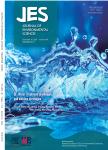Comparison of a plant based natural surfactant with SDS for washing of As(V) from Fe rich soil
Comparison of a plant based natural surfactant with SDS for washing of As(V) from Fe rich soil作者机构:Department of Chemical Engineering University of Malaya Department of Geology University of Malaya School of Planning Architecture and Civil Engineering Queen's University Belfast
出 版 物:《Journal of Environmental Sciences》 (环境科学学报(英文版))
年 卷 期:2013年第25卷第11期
页 面:2247-2256页
核心收录:
学科分类:12[管理学] 1204[管理学-公共管理] 082803[工学-农业生物环境与能源工程] 08[工学] 0828[工学-农业工程] 120405[管理学-土地资源管理]
基 金:funding provided by University of Malaya Kuala Lumpur (No. PV102-2011A UM-QUB6A-2011) for carrying out this research
主 题:soil washing soapnut Sapindus mukorossi arsenic plant based surfactant
摘 要:This study explores the possible application of a biodegradable plant based surfactant, obtained from Sapindus mukorossi, for washing low levels of arsenic (As) from an iron (Fe) rich soil. Natural association of As(Ⅴ) with Fe(Ⅲ) makes the process difficult. Soapnut solution was compared to anionic surfactant sodium dodecyl sulfate (SDS) in down-flow and a newly introduced suction mode for soil column washing. It was observed that soapnut attained up to 86% efficiency with respect to SDS in removing As. Full factorial design of experiment revealed a very good fit of data. The suction mode generated up to 83 kPa pressure inside column whilst down-flow mode generated a much higher pressure of 214 kPa, thus making the suction mode more efficient. Micellar solubilisation was found to be responsible for As desorption from the soil and it followed 1st order kinetics. Desorption rate coefficient of suction mode was found to be in the range of 0.005 to 0.01, much higher than down-flow mode values. Analysis of the PT-IR data suggested that the soapnut solution did not interact chemically with As, offering an option for reusing the surfactant. Soapnut can be considered as a soil washing agent for removing As even from soil with high Fe content.



